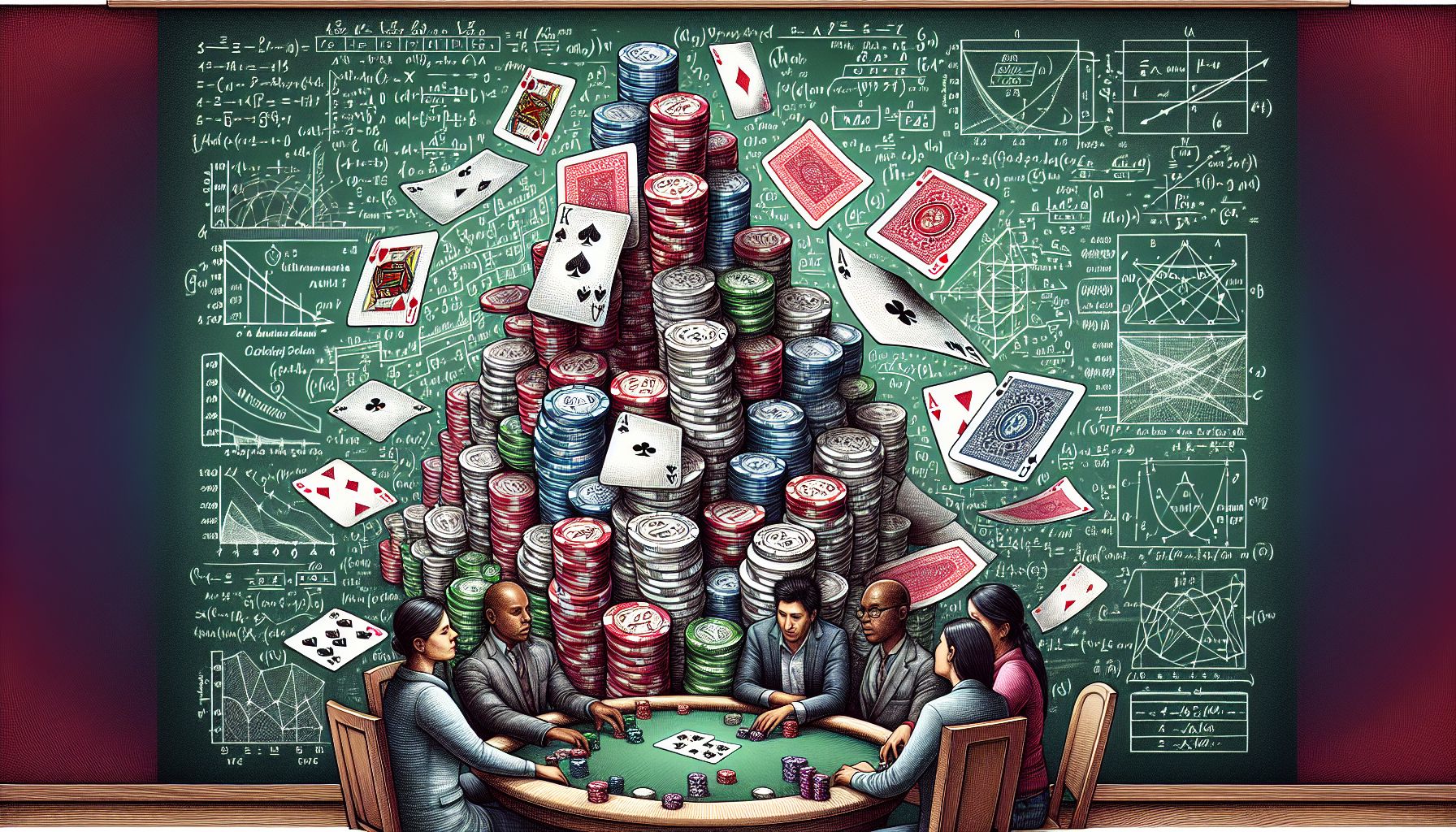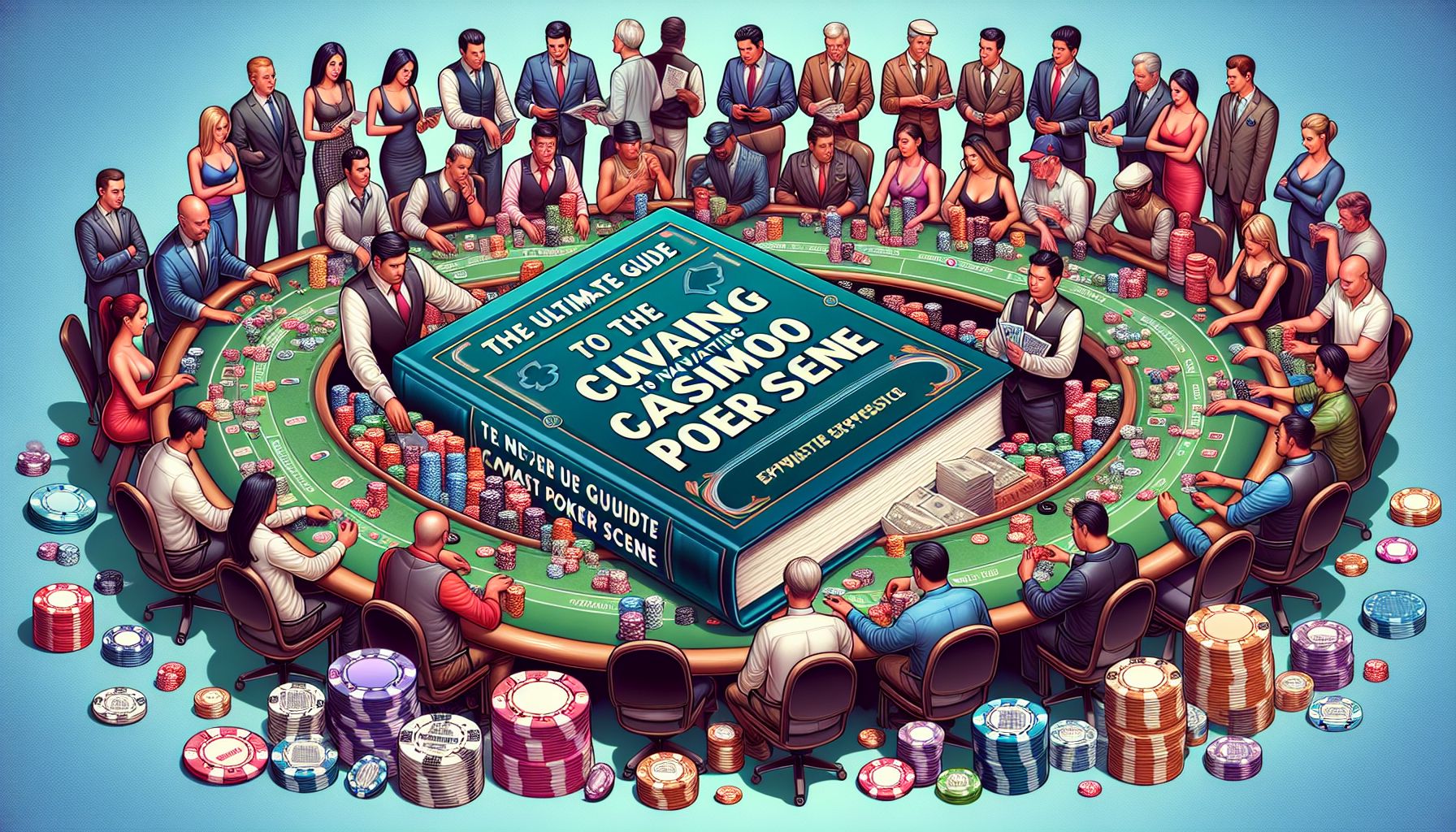In poker and related card games, Mathematical Approaches to Poker the player who can meticulously calculate the odds is the one who often has the upper edge. Poker is, in essence, a game of skill where the persons with the most comprehensive understanding of the mathematical principles at play are most likely to succeed. In a game shrouded in uncertainty, how do successful poker players continually defy the odds to win big?
For players who wish to improve their poker game, or those who have an academic interest in the complex mathematical principles guiding game play, this blog post offers a deep dive into a variety of analytical methods applied to poker.
The following sections will explore the mathematical theory of poker odds, providing an overview of how poker pros use strategies such as hand probabilities, expected values, and game theory to maximize their odds of success in the game.
The Basics: Understanding the Mathematical Foundations
Poker, at its heart, is a game of probability. Thus, a firm understanding of basic probability theory is an essential tool for any poker player. Probability in poker can be calculated by dividing the player’s winning outcomes by the total possible outcomes.
Probabilities of Poker Hands
The first step in understanding poker from a mathematical perspective is understanding hand probabilities. In the game of Texas Hold’em, for example, Mathematical Approaches to Poker each player’s individual hand consists of two private cards, while five shared cards are dealt face up on the “board”. High-ranking hands have lower probabilities of occurring, making them more desirable and likely to win.
For instance, let’s identify the probability of receiving a pair, which is one of the most common hands. If we’re dealt two cards at random, there are (13 \times 4 C 2 = 6) ways to form a pair from this same rank. Multiplying this by 13 (the number of ranks in a deck), we find 78 possible pairs. Dividing this by the total number of possible hand combinations ((52 C 2) = 1,326), we get a probability of approximately 0.0588, or around 6%.
Expected Value
The next mathematical concept poker players often utilize is expected value (EV), which is a prediction of how much a player can expect to win or lose on average over the long run for a specific play. A positive expected value (+EV) indicates a profitable play, while a negative expected value (-EV) indicates an unprofitable one.
Let’s consider a simple example. If you’re facing a $1 bet into a $10 pot and you estimate your chances of winning the hand at 20%, your EV for calling the bet is [EV = (Probability of Winning * Potential Profit) – (Probability of Losing * Potential Loss),] which simplifies to [EV = (0.20 * $10) – (0.80 * $1) = $0.60.] This positive EV means that calling the bet is a statistically profitable play in the long run.
Game Theory and Poker
The mathematical field of game theory has profound implications for poker, especially in the realm of bluffing. Game theory, pioneered by mathematician John Nash, seeks to analyze and understand the dynamics of strategic situations, like poker, where an individual’s success in decision-making depends on the actions taken by others.
Nash Equilibrium, a concept within game theory, refers to a state in a game where no player can improve their expected win rate by deviating from current strategy, assuming other players also stick to their strategies.
Let’s consider a simplified version of poker in which players can either bet $1 or fold. According to Nash Equilibrium, the player’s optimal strategy depends on the probability of their opponent folding. If the opponent folds less than one-third of the time, the optimal strategy is to always bet. If the opponent folds more than one-third of the time, the optimal strategy is to bluff with some frequency less than 100%.
Conclusion: Application of Mathematics in Poker
The above approaches are examples of how mathematical principles can be applied to poker. Understanding hand probabilities and expected value can guide a player’s decisions about when to bet, call, or fold.
Game theory, on the other hand, informs strategies involving deceptive plays such as bluffing. Prospective poker players should consider dedicating time to the mastery of these approaches, as they offer a systematic pathway tolong-term success in the game.
Whether you are a seasoned poker player, a statistician, or a mathematics enthusiast, the world of poker is a rich and intriguing arena to apply and test mathematical strategies. So, grab a deck, crunch some numbers, and apply these strategies at your next poker game!
Baca Juga: Beyond Luck: The Psychology of Winning in Casino Poker




